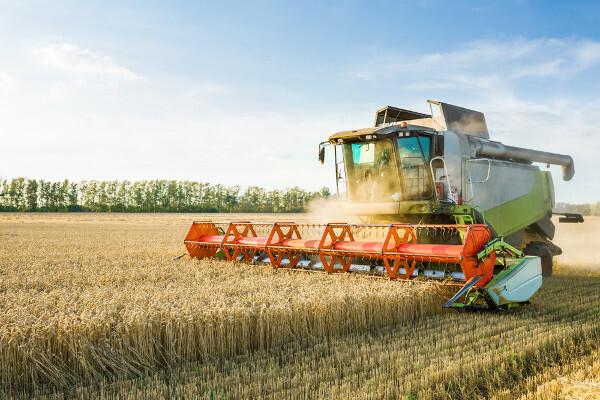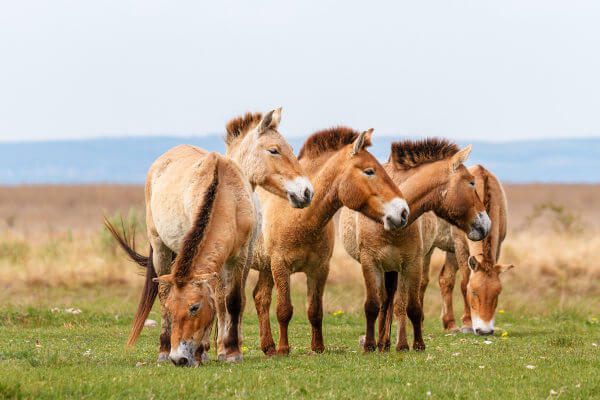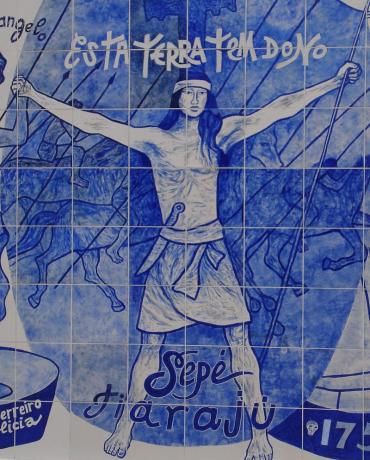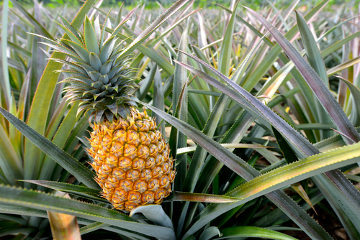Agricultural systems are the sets of techniques and practices for soil management and cultivation in the field. Considering characteristics such as the technologies used in the production process, the scale of production and the workforce, agricultural systems are classified into two main categories:
intensive;
extensive.
In Brazilian agriculture there is a clear differentiation in the occurrence of the two systems. While intensive agriculture is present in areas where modern agriculture, agribusiness and the production of agricultural commodities have advanced, the extensive system characterizes small production and the properties of settlers, squatters and family farming, which use traditional production techniques agricultural.
Read too: Monoculture — a cultivation practice that results in major environmental impacts
Summary on agricultural systems
Agricultural systems are the different practices and modes of agricultural production in the field.
Its classification considers the set of technologies used, the production techniques, the workforce and the production scale.
The main agricultural systems are intensive agriculture and extensive agriculture.
Intensive agriculture is the wide use of modern technologies in the production process, in addition to high capital investment, high productivity and lean and qualified labor.
Extensive agriculture is the use of traditional soil preparation and cultivation techniques, with lower productivity per hectare, in addition to a large and less qualified workforce.
In Brazil, intensive agriculture is concentrated in the productive regions of agribusiness. Extensive agriculture is practiced on the properties of small farmers, settlers and family farmers.
The presence of traditional agricultural systems (SAT) in the Brazilian countryside stands out, in which agricultural production is directly associated with the way of life and cultural traditions of a people.
Characteristics of agricultural systems
Agricultural systems are characterized as the set of practices and techniques used in agricultural production, that is, in the cultivation of the land. The techniques that define an agricultural system are both the different soil management practices and the instruments and the set of tools used in the execution of this process, thus composing what we call in agricultural activity or agriculture.
Other important elements for the classification of agricultural systems are the productivity of the crop, Besides the production scale performed on a given property and dthe labor employed in the production process.
How are agricultural systems classified?
Taking into account the characteristics listed in the previous topic, the main agricultural systems can be classified into intensive and extensive.
intensive agricultural system
It is the system in which there is the intensive application of modern production techniques and high level of mechanization in all stages of the production chain, ranging from seed selection, using advances in biotechnology and genetic science, to harvesting, storage and transport. Intensive agriculture, as it is also called, is characterized by extensive investment of capital (money), and is directly associated with the agroindustry and the upper circuit of the economy, inserting itself in global production chains.
Intensive agriculture uses chemical fertilizers and other agricultural defensives to ensure the development of crops, marked by high productivity rates. The largest share of agricultural production resulting from this system is intended for export, being sold on the international market as an agricultural commodity. Internally, intensive agriculture is responsible for providing raw material for industry.

In the intensive agricultural system, the workforce has a high level of qualification, being formed by a reduced number of workers when compared to the extensive system.
extensive agricultural system
The extensive agricultural system is characterized by the application of traditional techniques of soil management and planting and wI lookedtThe, with a lower rate of adoption of agricultural pesticides, machinery and other modern technologies, as opposed to what happens in the intensive system. Because of this, the productivity of this system is lower, and it becomes more susceptible to bad weather and other external factors that may delay or harm the development from the farm.
Extensive agricultural production commonly takes place on small and medium-sized landholdings, and is so focused for the subsistence of the farmer and his family and for generating income through the sale of food produced in the lower circuits of economy, which includes sales at fairs, small local or regional markets and even direct sales to final costumer.

The amount of capital invested in extensive agriculture is smaller than in intensive agriculture, even because the modality extensive farming is practiced by small producers, family farmers, settlers, squatters and peasants, who have less financial. The body of labor is more numerous in this system, although workers are less qualified.
See too: Impacts of intensive agriculture on the environment
What are the agricultural systems present in Brazil?
The Brazilian countryside is, at the same time, diverse and profoundly unequal. In it coexist the intensive and extensive farming systems, in addition to the presence of those systems called traditional farming systems (SAT).
The SAT, as defined by the Ministry of Agriculture and Livestock (Mapa), are those in which agricultural and extractive production interacts with the elements of the culture and way of life of a given community, and take into account the logic and territorialities of each of these populations in particular. The production process can occur through the use of traditional techniques and modern techniques, at the same time that there is greater concern about environmental preservation and sustainable practice.
The Map highlights two SAT recognized as Brazilian Intangible Cultural Heritage:
SAT of Rio Negro, in the state of Amazonas;
SAT of the Quilombola Communities of Vale do Ribeira, in the state of São Paulo.
Thinking about intensive and extensive systems, we have that extensive agriculture is practiced by small farmers, family farmers and agrarian reform settlers. This group is primarily responsible for supplying the Brazilian domestic market with food, and forms the majority with regard to the number of rural properties.
Intensive agriculture is practiced in the areas where agribusiness was developed. These are the expansion regions of the Brazilian agricultural frontier and traditional areas of production of agricultural commodities, such as soy and corn. The producers of the Midwest of Brazil and the agricultural region of Matopiba, formed by parts of the states of Maranhão, Tocantins, Piauí and Bahia, stand out. The production developed in these territories is aimed at export, and the part destined for the domestic market becomes raw material in the industry.
The intensive system is practiced on a smaller number of properties, although they occupy the largest share of Brazilian agricultural land.
Differences between modern agriculture and traditional agriculture
Modern agriculture: is agriculture practiced with the use of modern technologies arising from the Industrial Revolution. among these innovations are agricultural machinery; inputs and chemical pesticides used for soil correction and against diseases and pests; genetically modified seeds; modern irrigation systems; geolocation instruments; and several other tools. The workforce employed in this type of agriculture is highly qualified. In addition, capital investments are made in greater volume, and production is turned to foreign trade.
Traditional agriculture: is agriculture practiced with the use of traditional methods soil preparation, planting and harvesting, without the application of modern tools, fertilizers and other types of agricultural pesticides. These traditional methods can be passed from generation to generation, considering that the Traditional agriculture is practiced by small farmers, family farmers and communities traditional. Capital investment is lower, and traditional agricultural production is intended for subsistence or local trade.
Know more: Green Revolution — set of technological innovations that reached the countryside
Solved exercises on agricultural systems
Question 1) (UFPB) Agricultural systems and livestock production can be classified as intensive or extensive. This notion is linked to the degree of capitalization and the productivity index, regardless of the size of the cultivation or creation area. In this sense, considering labor relations, it is correct to say that intensive agriculture uses:
a) traditional cultivation and harvesting techniques, in addition to high productivity rates.
b) modern soil preparation techniques and, therefore, cannot exploit the land for a long period of time.
c) modern production techniques and, therefore, requires workers with different qualifications, resulting in more complex work relationships.
d) large areas of cultivation and/or pasture, as it aims at profit and employs a large amount of skilled labor residing on the property.
e) small areas of cultivation and/or pasture, as there is the use of traditional production techniques managed by the owner and his family, who do not live on the property.
Resolution: Alternative C
Intensive agriculture is the one developed using modern production techniques, which requires skilled labor. Due to this fact and the mechanization of processes, the number of workers employed is smaller, and labor relations are more complex than in the extensive system.
Question 2) (Enem 2018) Ecological agriculture and organic food production are gaining relevance in different parts of the world. In the Brazilian countryside, the same thing happens. Driven especially by the expansion of demand for healthy foods, the sector grows every year, although it remains relatively marginalized in the agenda of priorities of the agricultural policy practiced in the country.
AQUINO, J. R.; GAZOLLA, M.; SCHNEIDER, S. In: SAMBUICHI, R. H. R. et al. (Org.). The national policy of agroecology and organic production in Brazil: a trajectory of struggle for sustainable rural development. Brasília: Ipea, 2017 (adapted).
What kind of government intervention in rural areas is capable of reducing the productive marginalization presented in the text?
a) Subsidize family-based crops.
b) Favor chemical fertilization practices.
c) Restricting the use of modern machinery.
d) Control the expansion of irrigation systems.
e) Regulate the use of selected seeds.
Resolution: Alternative A
The allocation of public investments to family farming properties would be able to expand the growth of this sector in the Brazilian economy, since these producers are mainly responsible for supplying food to the domestic market in the Brazil. Increasing the productive capacity of this portion of producers in the Brazilian countryside would give them more space and make the economy even more dynamic.
By Paloma Guitarrara
Geography Teacher
Source: Brazil School - https://brasilescola.uol.com.br/geografia/sistemas-agricolas.htm



